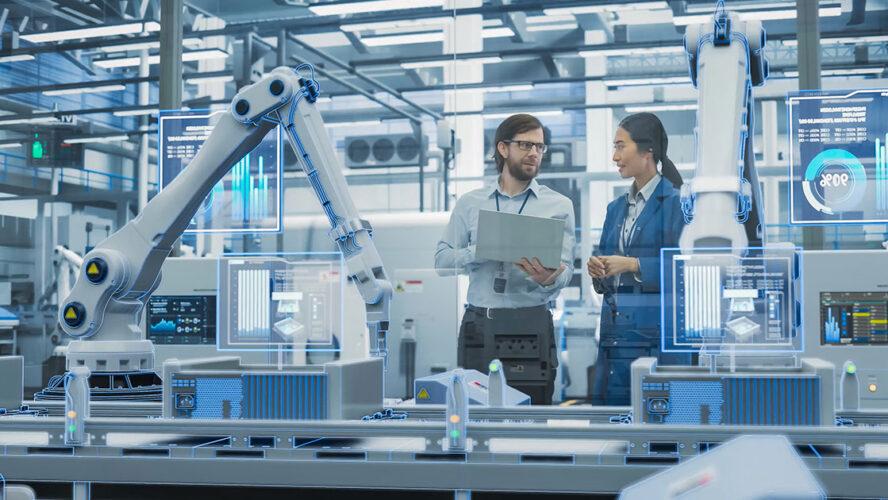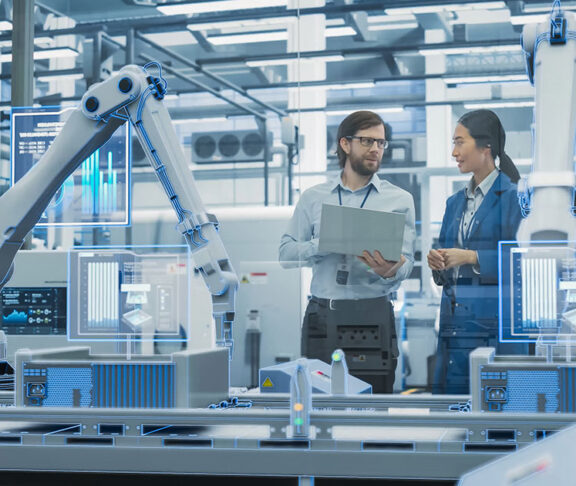This is not a story about how technology is eliminating manufacturing jobs. On the contrary, it’s a story about how new technology — especially digitalization and AI — is helping create the highly skilled and productive shop floor workforce of the future.

Stephen Gold
President and CEO, Manufacturers Alliance
The challenge of filling American factory positions is a decades-old headache for the sector. Indoctrinated by society’s continuing (and misleading) portrayal of dark, dirty, and dangerous factories, 21st-century Americans with the skills most needed to work in today’s technologically sophisticated operations haven’t sought out manufacturing careers. But I predict that, as younger generations come to better understand how U.S. manufacturing is becoming technologically cutting edge, manufacturing’s adoption of advanced automation, digitalization, and AI will inevitably start attracting next-generation technicians, engineers, and the like.
Still, with the advent of AI technologies in manufacturing — from large language models and robotics to machine learning and deep learning — concerns are now being expressed that machine operators, fabricators, welders, and other skilled functions will be superseded by non-human substitutes. Before rumor and speculation once again undermine our domestic industrial base with a distortion of American shop floor conditions, let’s take a quick look at why the technology boon holds great promise for future manufacturing workers.
Collaboration between human and machine
First, rather than displacing workers, today’s sophisticated technology toolbox is supplementing and complementing them. AI-powered robots are indeed taking over repetitive tasks, but such automation frees workers up to focus on higher-value areas like programming and problem-solving. In turn, human workers use AI-powered systems to make more informed decisions based on real-time data analysis, leading to higher quality and more productive output. We’re seeing a collaborative approach to operations, where machine precision is balanced by human intuition to enhance overall performance. In fact, shop floor roles are evolving, becoming more strategic and cerebral. As a result, we’re seeing new roles emerge, such as plant system administrator, AI manager, and robotics technician.
Second, new technologies actually reduce barriers to entering the manufacturing workforce. The next generation of skilled tradespersons is far less likely to need a four-year degree than in other, less technologically driven sectors. With the increasing need for technical skill sets, requirements for schooling through college curricula are being replaced by an emphasis on training for technology and digital transformation.
Finally, because of the widespread adoption of robotics, data analysis, and, increasingly, AI capabilities, manufacturing operations have seen a dramatic drop in the number of safety incidents. US Bureau of Labor Statistics data shows that the injury rate in the 30 years between 1990 and 2020 declined by more than 70%. Not only do robots now take over the “heavy lifting” that once caused so many safety issues, but virtual and augmented reality software also provide more effective levels of training, and predictive maintenance reduces equipment downtime, reducing emergency maintenance visits that can lead to hasty, risky responses.
A new image of manufacturing careers
The analog picture of 20th-century manufacturing assembly lines requiring continuously repetitive motions needs to be thrown out and replaced by the digital picture of 21st-century computer-savvy factory workers teaming up with robots, AI and machine learning, and VR and AR to create a highly sophisticated workplace and a more competitive American manufacturing base.

